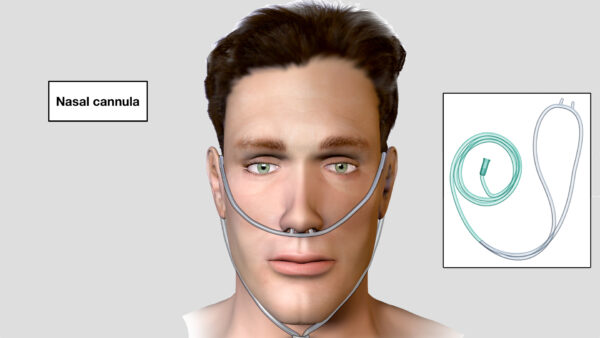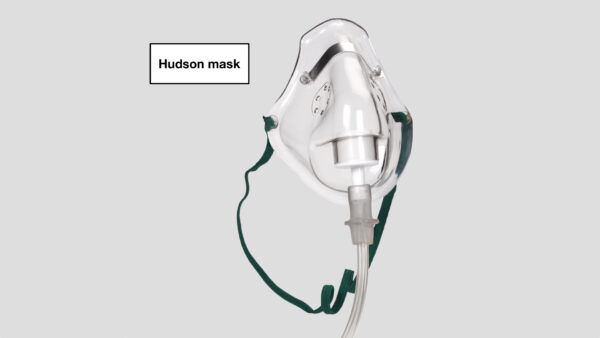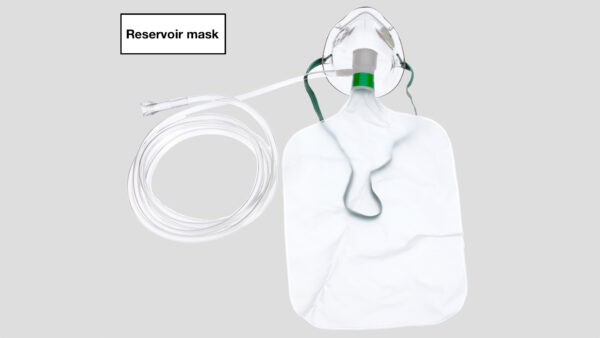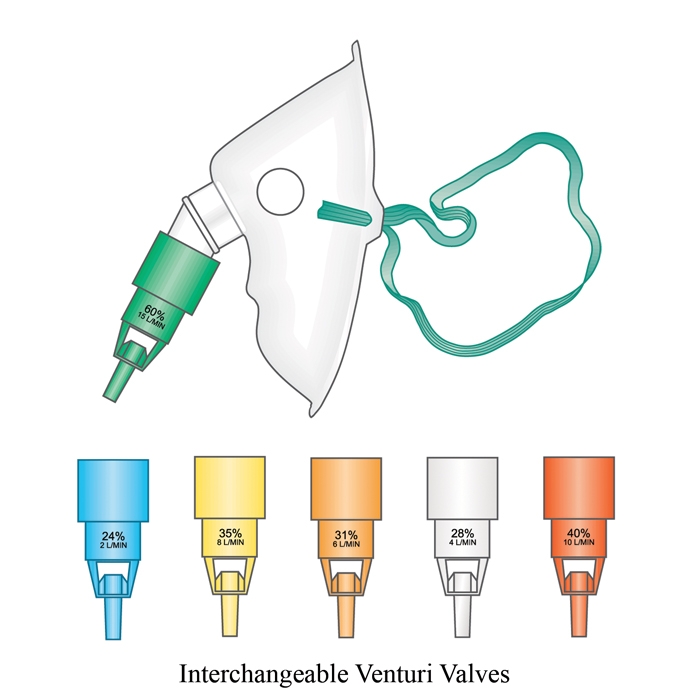- 📖 Geeky Medics OSCE Book
- ⚡ Geeky Medics Bundles
- ✨ 1300+ OSCE Stations
- ✅ OSCE Checklist PDF Booklet
- 🧠 UKMLA AKT Question Bank
- 💊 PSA Question Bank
- 💉 Clinical Skills App
- 🗂️ Flashcard Collections | OSCE, Medicine, Surgery, Anatomy
- 💬 SCA Cases for MRCGP
To be the first to know about our latest videos subscribe to our YouTube channel 🙌
Introduction
Supplementary oxygen to correct hypoxia can be delivered by a variety of oxygen delivery devices. It is important to be familiar with different devices and the situations in which they are used.
Each oxygen delivery device will deliver a different fraction of inspired oxygen (FiO2). This guide will cover the common oxygen delivery devices used, and their correct oxygen flow rates.
Oxygen is a prescription-only medicine (POM) and therefore supplementary oxygen should be prescribed on the patient’s drug chart, with a target range for oxygen saturations.
Nasal cannulae
Nasal cannulae (NC) are used for mild hypoxia, typically in non-acute situations.
Nasal cannulae deliver 24 – 30% O2 (maximum flow rate of 4L/min).
The NC tubing is placed around a patient’s face with the prongs positioned at the nostrils. The NC tubing can be secured behind the patient’s head or around their ears.
Issues with nasal cannulae:
- High flows will dry and irritate nasal passages
- Do not allow close control of FiO2

Simple face mask (Hudson mask)
Simple face masks (also called Hudson masks) are typically used to treat mild to moderate hypoxia.
The mask delivers 30 – 40% O2 (flow rate 5-10 L/min).
The mask is positioned over the patient’s nose and mouth with the elastic strap behind their head.
Issues with simple face masks:
- They do not allow close control of FiO2
- There is a risk of aspiration if the patient vomits whilst wearing the mask

Non-rebreather mask (reservoir mask)
Non-rebreather masks (also called reservoir masks) are used to treat patients with a significant degree of hypoxia (moderate to severe).
Non-rebreather masks can deliver high FiO2 concentrations as the oxygen is inhaled from both the reservoir bag as well as the direct oxygen source.
This mask delivers approximately 70% O2 when used with a 15L oxygen flow rate.
The mask fits over the patient’s nose and mouth and can be secured to the face using elastic straps.
Ensure the reservoir bag fills by temporarily obstructing the valve before positioning the non-rebreather mask on the patient.
Issues with non-rebreather masks:
- For the mask to work effectively, the reservoir bag needs to be filled before the mask is fitted to the patient. To fill the reservoir bag, obstruct the valve with your finger until the bag is filled with oxygen.
- Reservoir masks don’t have a true seal, so some entraining of the surrounding air is unavoidable. A reservoir mask is therefore not a fixed performance device.

Venturi mask
Venturi masks are designed to deliver constant FiO2 regardless of the patient’s respiratory rate and flow pattern (i.e. a fixed-performance device).
They are used to deliver oxygen to patients with chronic obstructive pulmonary disease (COPD) due to the risk of type 2 respiratory failure.
The Venturi mask fits over the patient’s nose and mouth like other face masks.
Details of the required flow rate and percentage of oxygen delivery are shown on the coloured mask fittings (see below).
Issues with Venturi masks:
- If the flow rate of the oxygen is lower than the recommended amount for a specific Venturi mask, the mask won’t deliver the stated FiO2.
- If you increase the oxygen flow rate beyond the rate recommended for the mask, it will not continue to increase FiO2.
Table 1. The FiO2 delivered by different venturi masks.
| Flow rate required (L/min) | FiO2 delivered | |
| Blue | 2-4 | 24% |
| White | 4-6 | 28% |
| Yellow | 8-10 | 35% |
| Red | 10-12 | 40% |
| Green | 12-15 | 60% |

Humidified oxygen
Standard oxygen gases have a drying effect on the mucous membranes that can result in airway damage as well as heat and fluid loss.
Humidified oxygen reduces this effect and can assist in breaking down a patient’s respiratory secretions, making them easier to clear.
Humidified oxygen is most effective when the gas reaching the alveoli is at body temperature (37ºC) with a relative humidity of 100%.
Oxygen is passed through a humidifying device producing sterile vapour before travelling in elephant tubing to a face mask covering the patient’s nose and mouth.
Issues with humidified oxygen:
- Water can pool in the oxygen tubing and obstruct the flow of oxygen if not drained regularly.
Editor
Dr Chris Jefferies
References
- Nasal cannula: By BruceBlaus (Own work) [CC BY-SA 4.0] via Wikimedia Commons.




